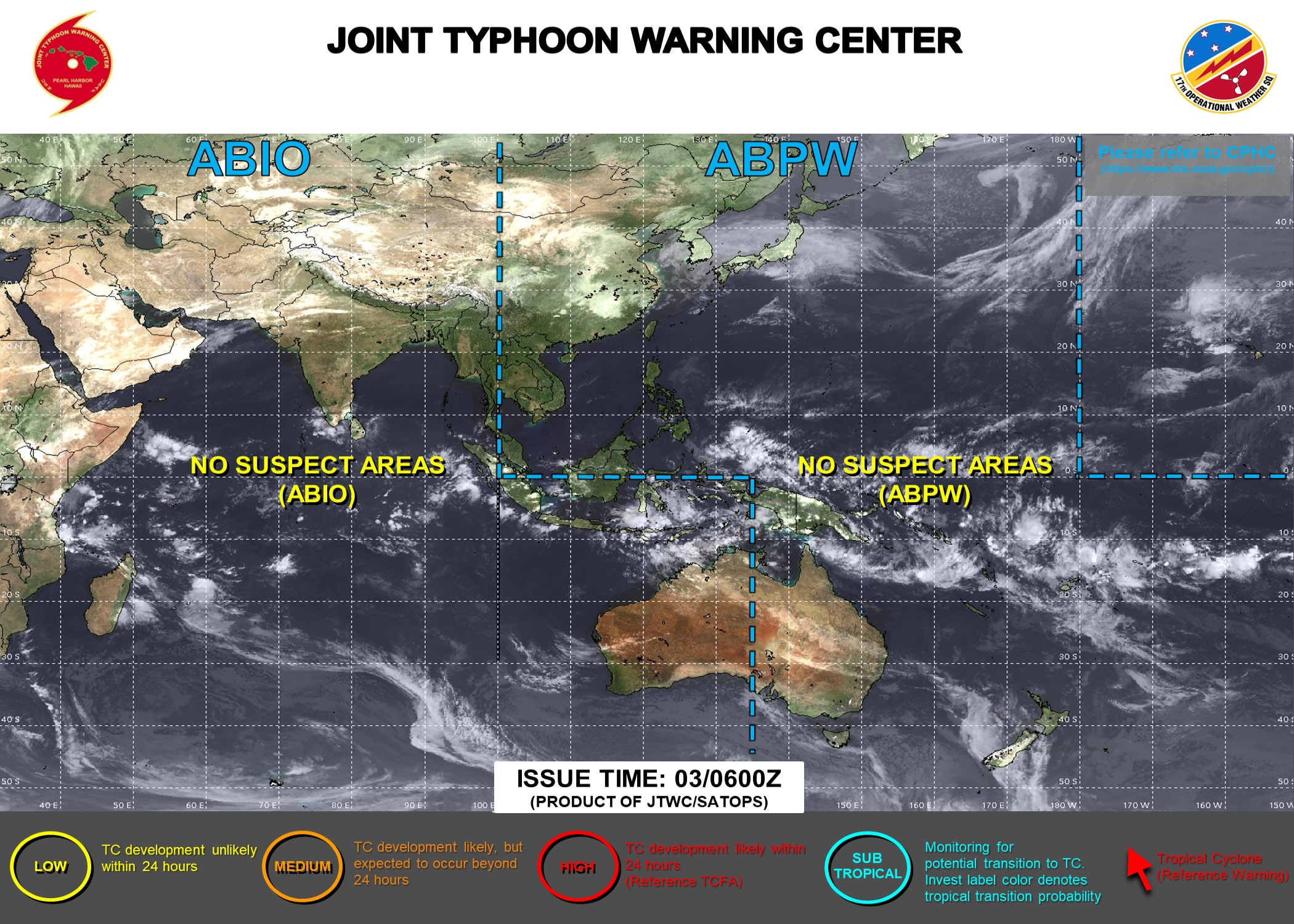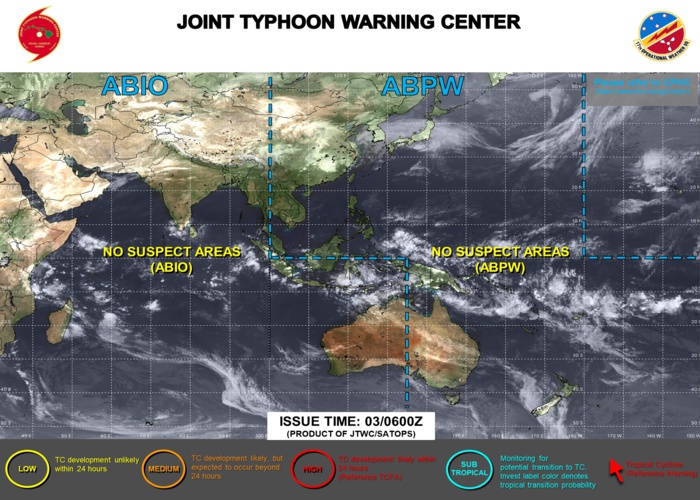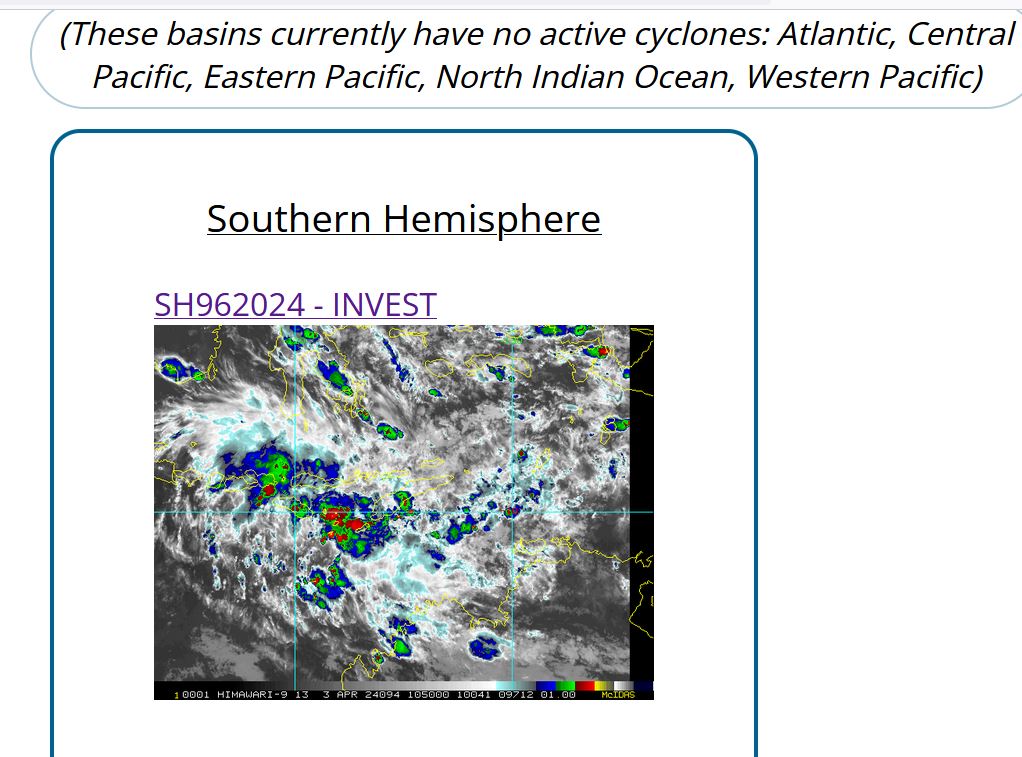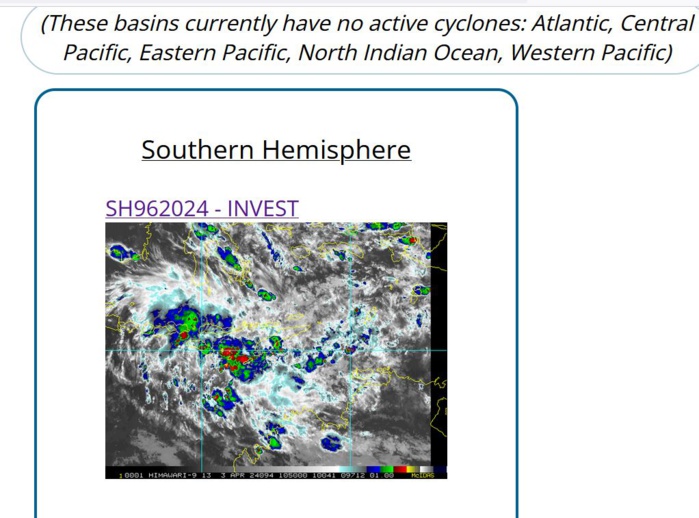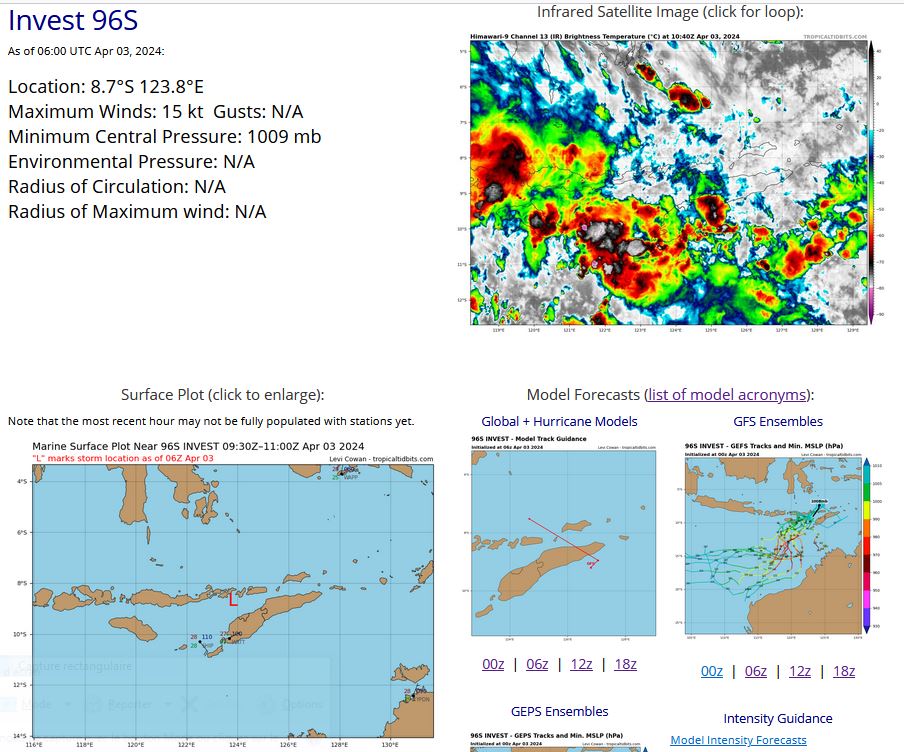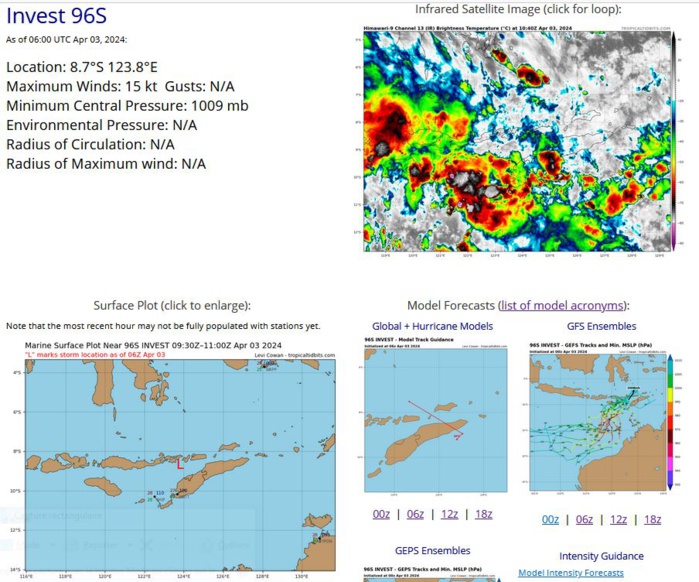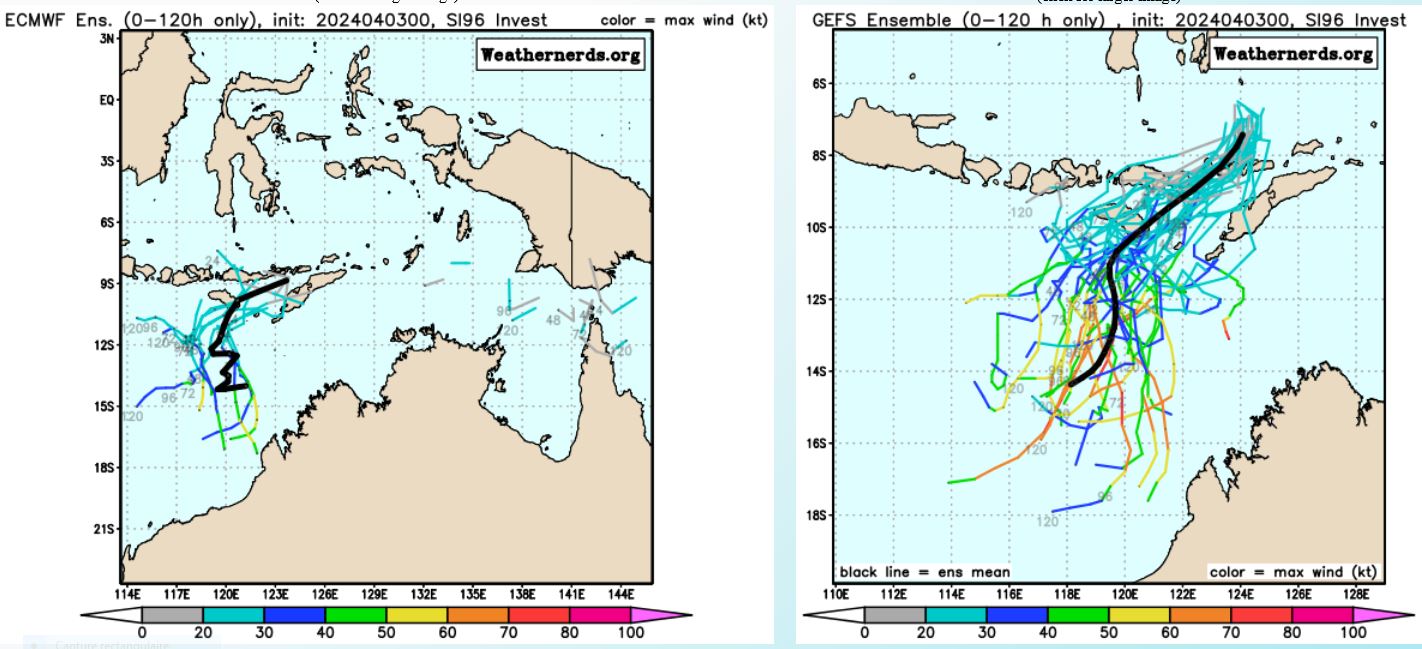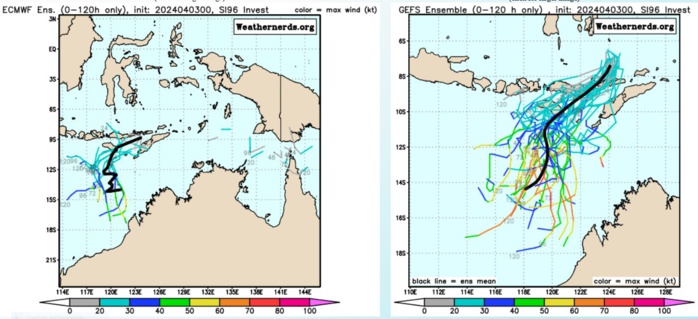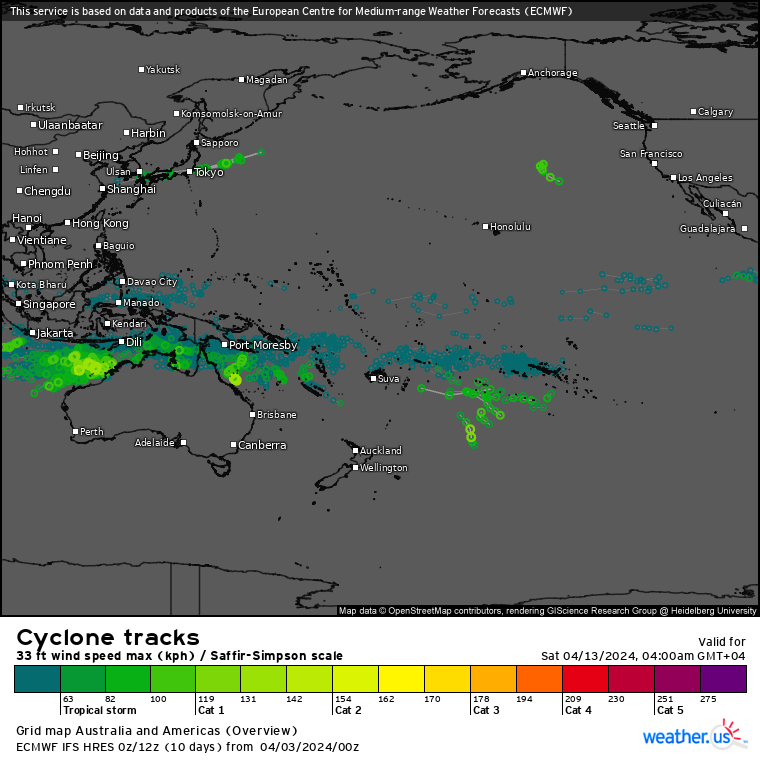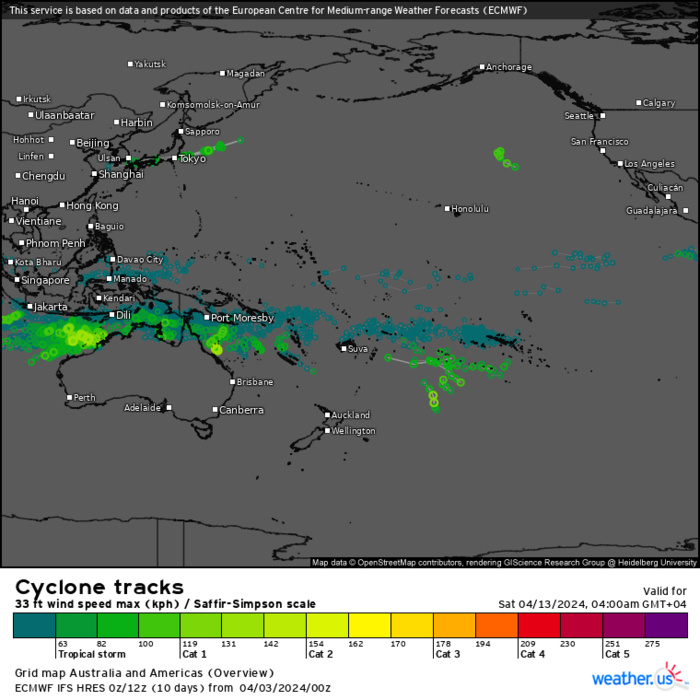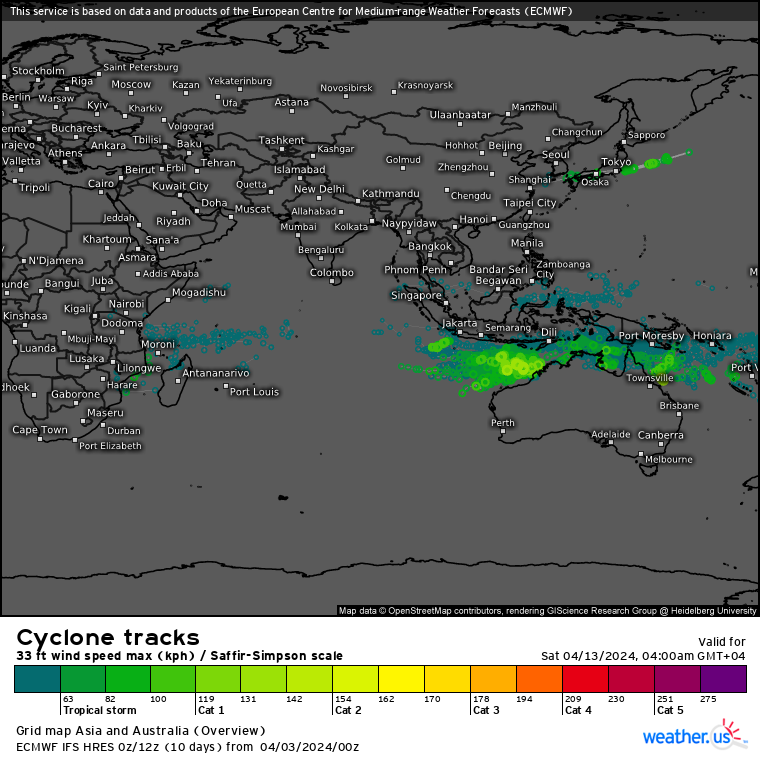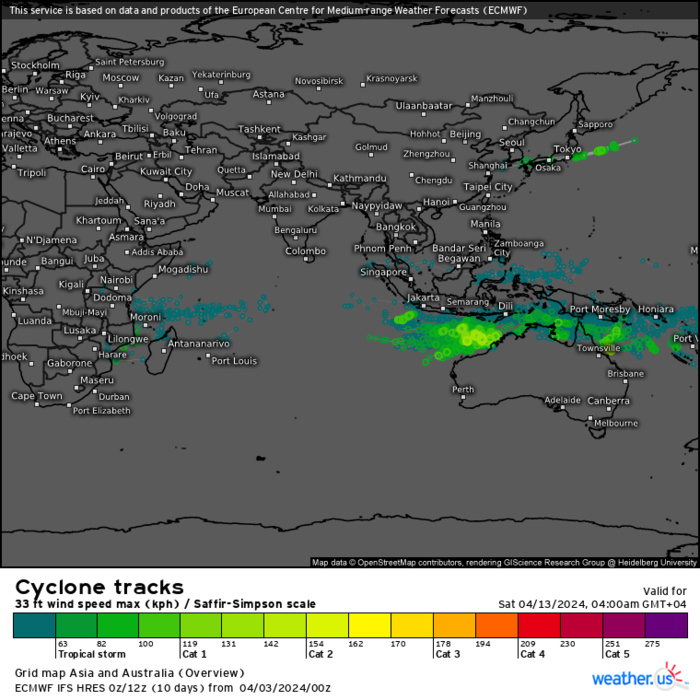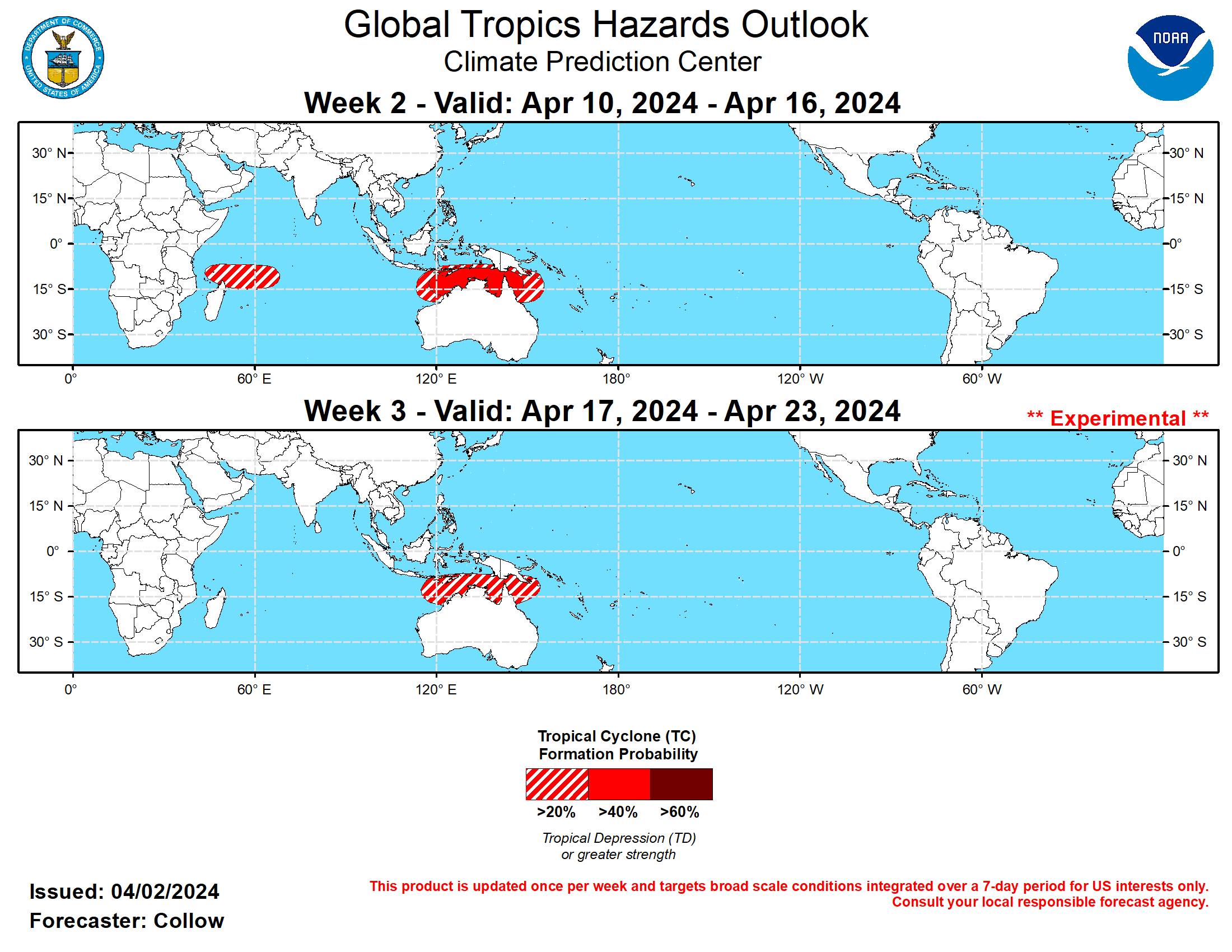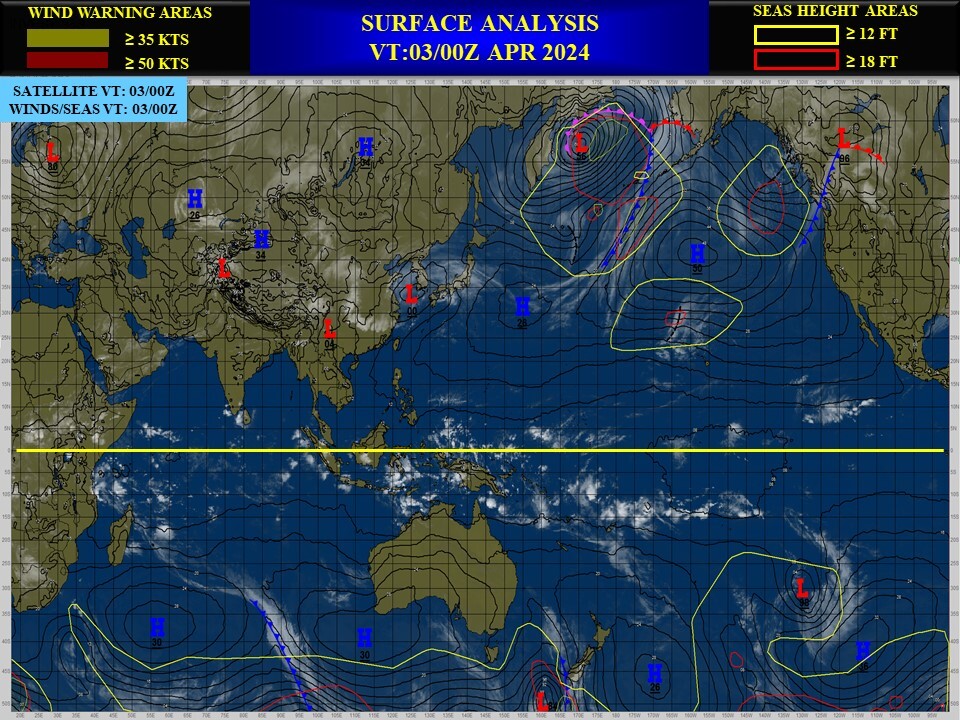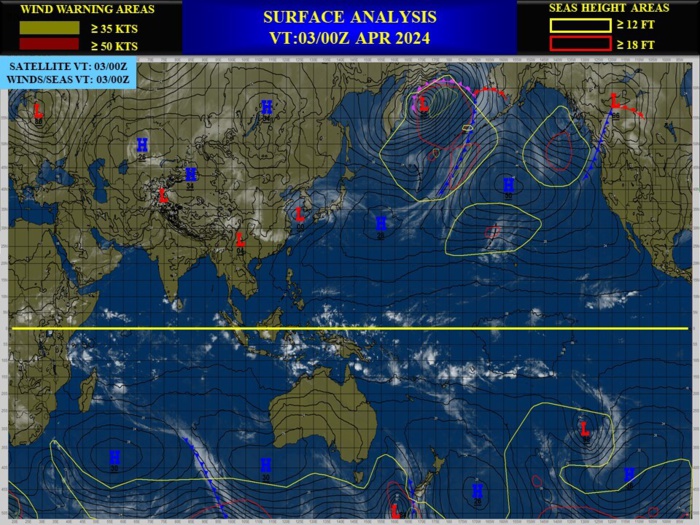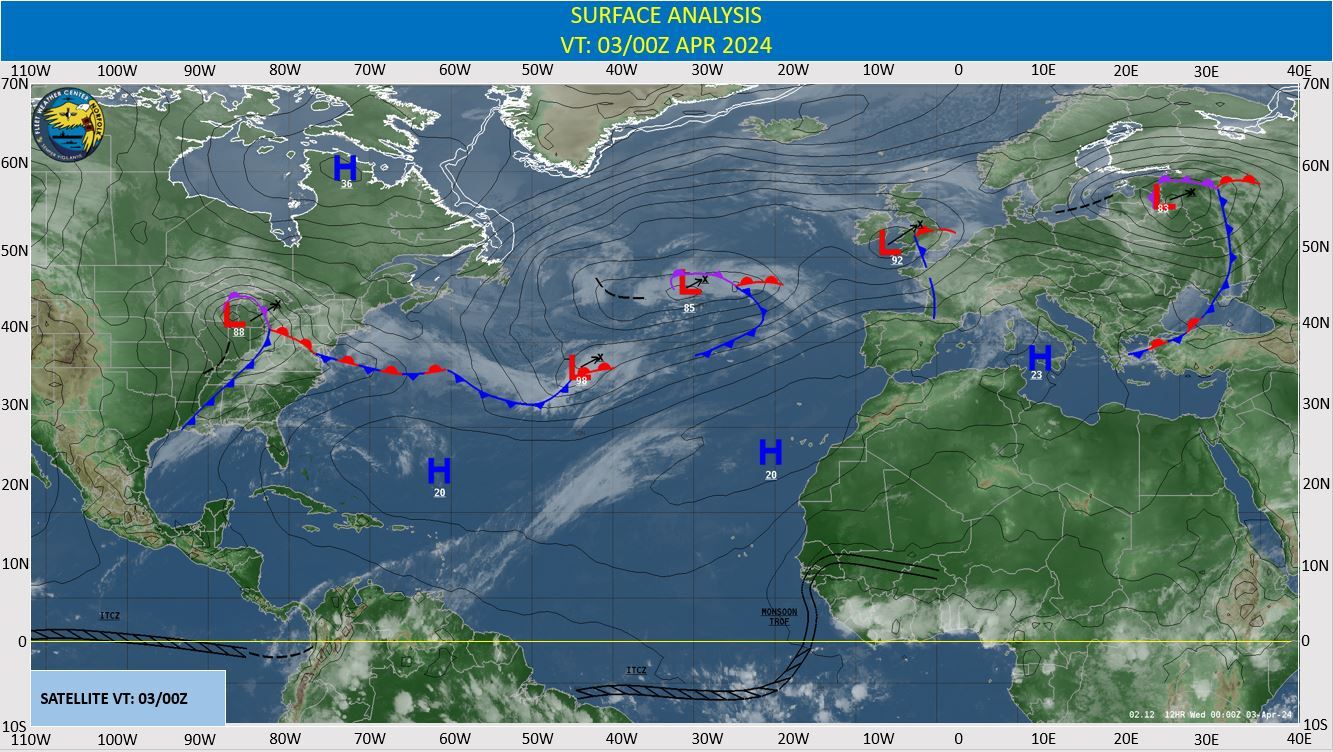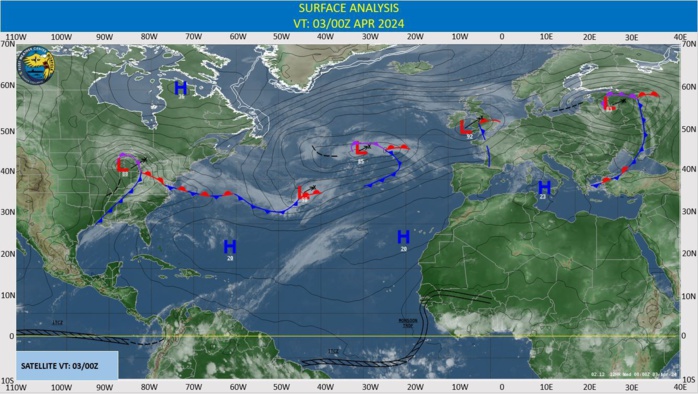CLICK ON THE IMAGERIES BELOW TO GET THEM ENLARGED
SOUTH INDIAN OCEAN/TIMOR SEA: INVEST 96S. ESTIMATED LOCATION AND INTENSITY AT 03/06UTC. INTENSITY IS 15 KNOTS
TC Ensemble Forecasts: 120H
ECMWF Storm Tracks (Ensemble) : 04/03 00UTC+ 10 DAY
ECMWF Storm Tracks (Ensemble) : 04/03 00UTC+ 10 DAY
Last Updated - 04/02/24 3 WEEK TROPICAL CYCLONE FORMATION PROBABILITY
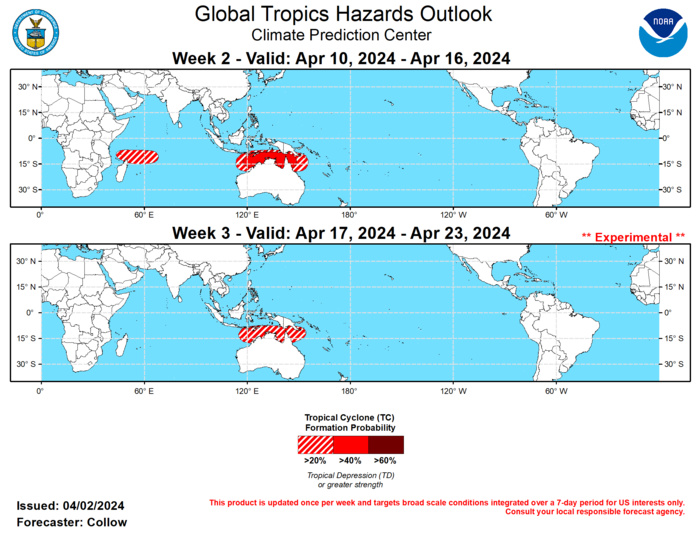
GTH Outlook Discussion Last Updated - 04/02/24 Valid - 04/10/24 - 04/23/24 The Madden Julian Oscillation (MJO) has slowed its eastward propagation during the past week, with the amplitude weakening as it crossed back into the Eastern Hemisphere. The CFS, ECMWF, and GEFS ensembles all predict renewed propagation through the Indian Ocean and into the western Pacific during the 2-3 weeks. As the MJO approaches the Date Line, constructive interference with equatorial Rossby Wave activity is possible. Thereafter, the amplitude of the MJO is more uncertain, with some ensemble members continuing propagation into the Western Hemisphere during late April, while others weaken the intraseasonal signal into the RMM-based unit circle. An enhanced low frequency signal is noted across the Indian Ocean in the upper-level spatial velocity potential field, with enhanced divergence aloft across eastern Africa and the western Indian Ocean. This is due in part to the slowing of the MJO over the region, although dynamical models persist this low frequency signal throughout April. While an uptick in the Dipole Mode Index (DMI) during March may be suggestive of a reemerging positive Indian Ocean Dipole event, caution is given due to the time of year, and it is more plausible that the low frequency signal can be attributed to several factors including destructive interference between the MJO and other higher frequency modes of variability, in addition to the weakening El Nino. No new tropical cyclones (TCs) developed during the past week. As the MJO resumes its eastward propagation, TC development chances are forecast to increase along the northern coast of Australia. A 40 percent chance for TC formation is highlighted during week-2, with a 20 percent chance continuing into week-3, supported by increased TC formation probabilities in the GEFS and ECMWF ensembles. Confidence decreases later in April due to the diminishing seasonal climatology. A 20 percent chance of TC development is also posted across the southwestern Indian Ocean during week-2 due to the persisting low frequency convective signal in that region, although confidence is low and the elevated risk is not continued into week-3.




